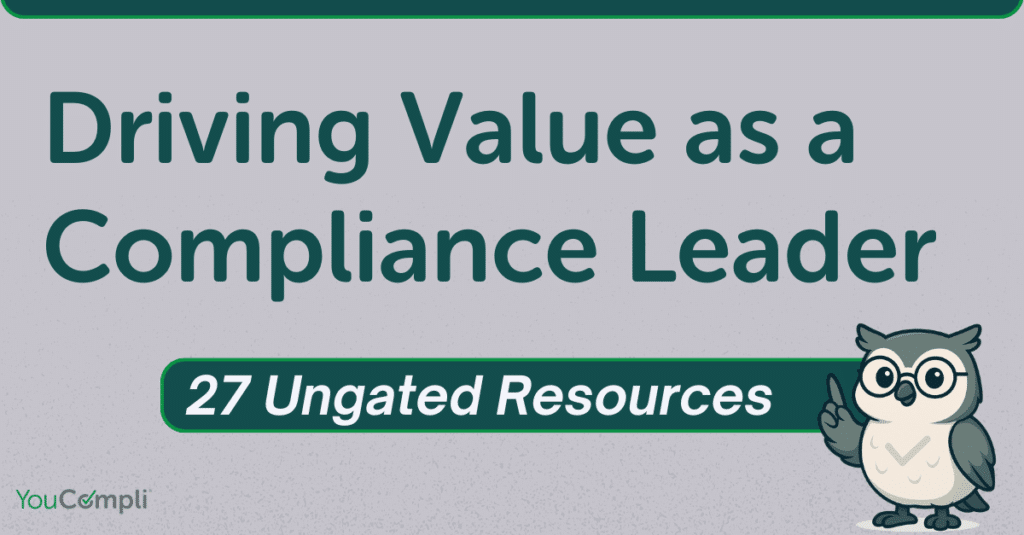
(EDITOR’S NOTE: Jenny O’Brien is one of YouCompli’s Titans of Compliance. As part of her “Next Jen” series, she contributes posts that help the next generation of compliance leaders learn skills, attributes, and other characteristics to succeed in their careers. It’s all part of her commitment to developing both the compliance profession and individual compliance professionals. For more posts by Jenny O’Brien, visit her Author Page.)
In my last article “I Got the Compliance Job, Now What?” our focus was tips and tricks to help you bring value and be relevant to your new team. In this article, the focus shifts from the individual to how your compliance program and team bring value and are relevant to the goals and priorities of your organization.
The Parallel Path of a Compliance Program
Truly effective compliance programs have a strategic vision supported by a business plan that is communicated to C-suite leaders. The plan should encompass a comprehensive roadmap that takes it down two distinct but equally critical paths. The first is to ensure regulatory requirements are met, and the second is to demonstrate awareness and alignment with key business priorities. Ultimately, supporting both results in compliance being a key partner around the organization and achieving its business priorities and goals.
Meeting Regulatory Expectations/Requirements
A compliance program exists quite simply because it is mandatory for organizations that accept funding from Medicare, Medicaid, and other federal government programs. To participate, organizations must demonstrate there are processes in place to prevent, detect, and correct regulatory issues. The framework of the seven elements of a compliance program is established by the Federal Sentencing Guidelines and other state and federal regulations. All of these were recently detailed by the OIG’s General Compliance Program Guidance (GCPG); even though this is voluntary, it signals regulators’ expectations if/when your program is audited.
At its core, demonstrating to the regulators that you have a framework for the seven elements of an effective compliance program is a fundamental reason an organization invests in a compliance program. However, limiting your compliance program’s impact to this singular purpose is shortchanging both your program and your organization.
Compliance’s Value Proposition to Your Organization
The second, and (I would posit) even more critical role your compliance department should play for your organization, is to demonstrate the value-add of a compliance department beyond satisfying regulatory requirements. Examples include:
- Aligning with Business Priorities: Embedding your team into each operational area allows for awareness and input early in the process, and for compliance to serve as strategic advisors and proactively support implementing business priorities.
- Scaling for Growth: The compliance team needs to understand key business priorities so they can be part of the solution and respond to business needs. This requires hiring talent that can be flexible and nimble in supporting new areas of growth and emerging risk issues.
- Prioritizing Consumer-Centric Focus: So much of any organization’s focus is on organic growth and ensuring retention of current customers and/or patients. Compliance aligns well with others around the business committed to providing high quality, operational excellence, and a zero-defect mindset.
Bottom line: rather than limiting the breadth and scope of your compliance program to what is minimally required by regulators, think of the breadth and scope of what it should be. As I mentioned in my last article, you should be building relationships with business partners to better understand their priorities. This enables you to think strategically, be innovative, and bring ideas and solutions that are proactive rather than reactive. Now that is a quantifiable value proposition!

Jenny O’Brien, JD, MS, CHC is president and principal at BlackBridge Advisors. She has been the chief compliance officer (CCO) at multiple companies, including UnitedHealthcare, as well as a state assistant attorney general and a partner at a law firm. She is a past president and board member of HCCA/SCCE, serves on the boards of Bon Secours Mercy Health System and St. Charles Health System, and the advisory boards of Stellar Health and YouCompli.
27 Ungated Resources for Compliance Leaders and Teams
Compliance professionals sometimes feel undervalued in comparison to other functions in their organization. They think leaders and colleagues don’t really understand what they do.
These resources will help. Packed with ideas, tips and recommendations, these pieces were written by professionals with many years of compliance experience.
You can quickly skim for articles that relate to your needs and interests. Bookmark this page as a reference for future questions or projects.



